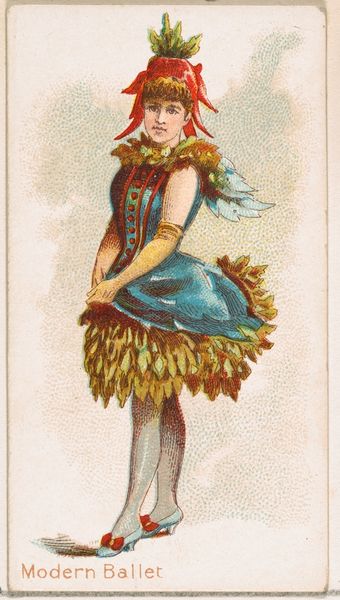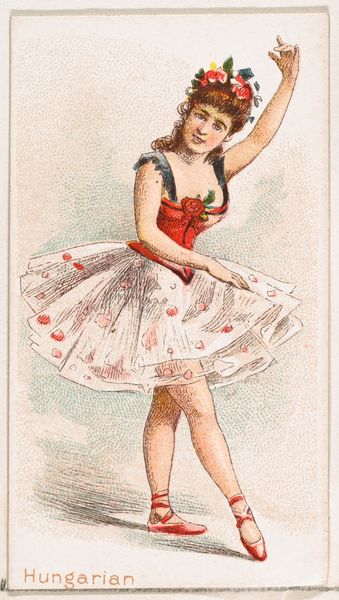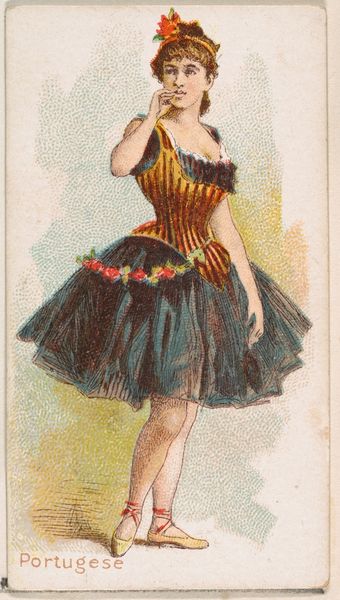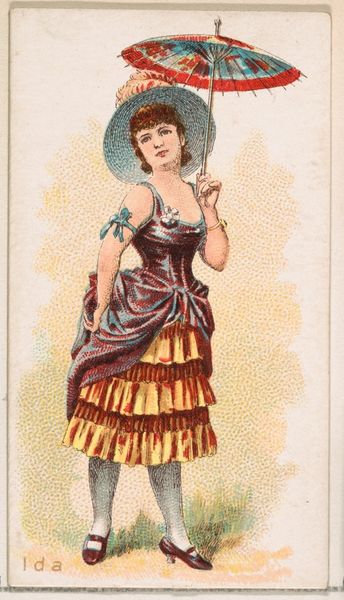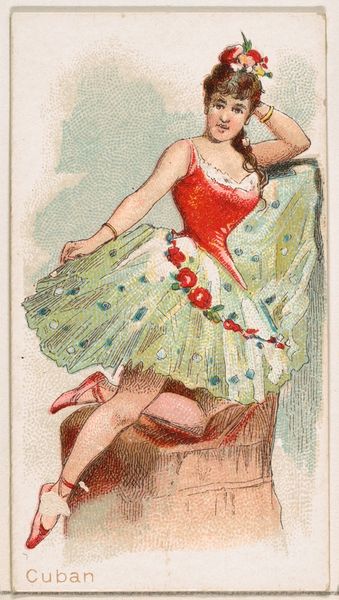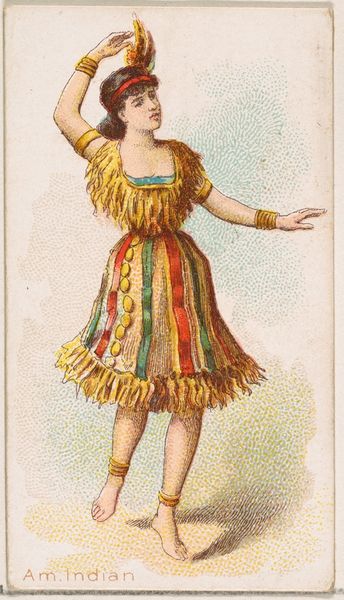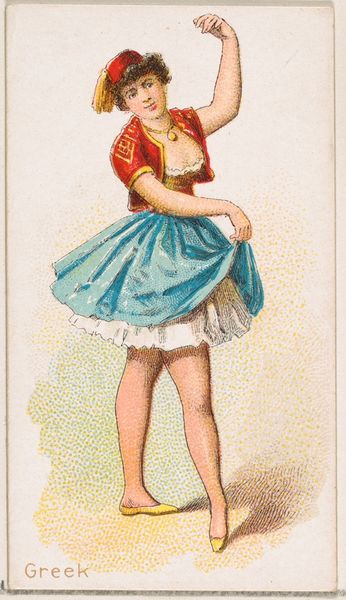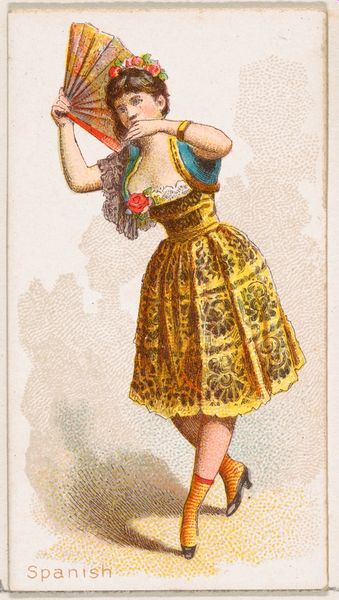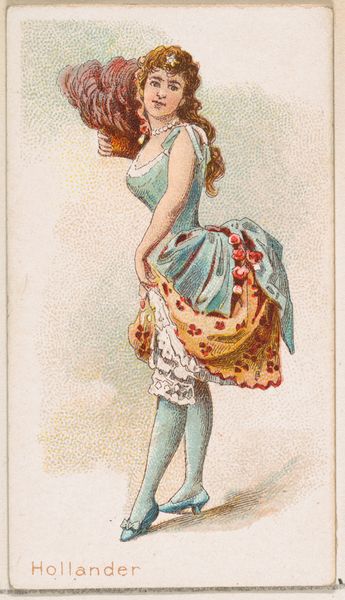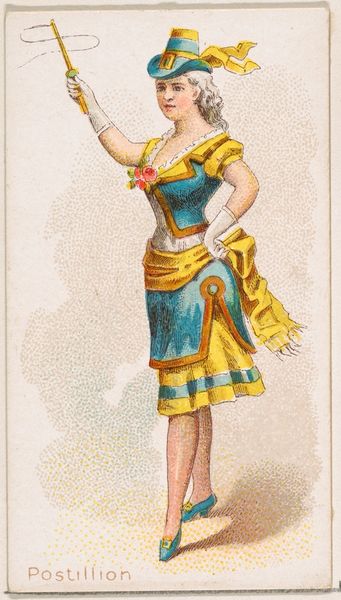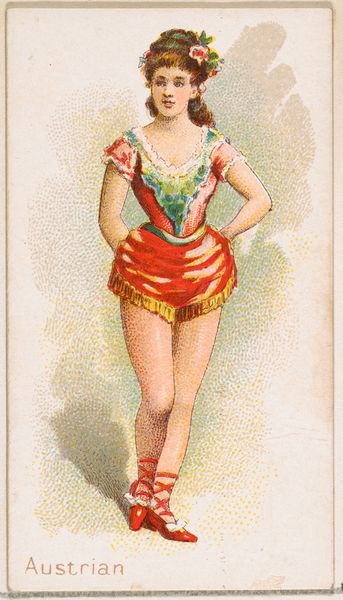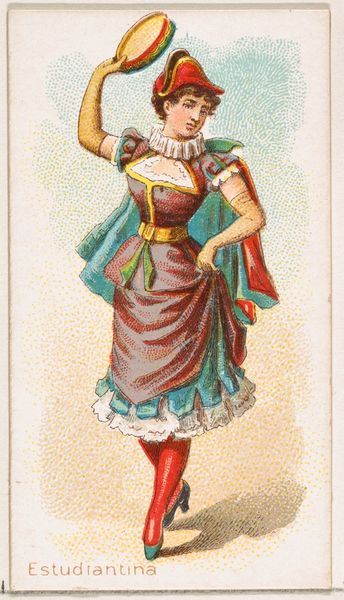
Folly Dancer, from the Dancing Women series (N186) issued by Wm. S. Kimball & Co. 1889
0:00
0:00
drawing, coloured-pencil, print
#
portrait
#
drawing
#
coloured-pencil
# print
#
impressionism
#
figuration
#
coloured pencil
#
watercolor
Dimensions: Sheet: 2 11/16 × 1 7/16 in. (6.9 × 3.7 cm)
Copyright: Public Domain
Curator: Let's consider "Folly Dancer" from the "Dancing Women series," produced around 1889 by Wm. S. Kimball & Co. This particular piece employs colored pencils and print work. What are your initial thoughts? Editor: It has a rather…manufactured charm. The costume’s vibrant, but the print lacks depth. I’m immediately thinking about the production process, the sheer volume of these little cards that must have been churned out. Curator: Precisely. Kimball was a tobacco company; these were trade cards included in cigarette packs. Mass-produced imagery meant to entice consumers, feeding into the culture of collecting and display in the late 19th century. Think about the political implications here; it’s the popularization of art through commodity culture. Editor: And what’s her role in all of this, this Folly Dancer? Is she meant to represent an actual performer, a product of the music halls of the era? Curator: Probably not a specific individual. More likely, she’s a type, a character carefully crafted to appeal to a particular, likely male, demographic. There's a studied grace that conforms to the gender norms and desires of the time. Her figure is carefully posed. Editor: I’m wondering about the materials. These trade cards are essentially ephemera. What did this mass production mean for the status of image-making? How does the artistic value get determined if the main selling point is something else entirely? Curator: An excellent question! These images reflect evolving roles within both art and the society in general, illustrating new approaches of how we were starting to perceive performance and leisure. Editor: Fascinating how a tiny card tucked into a cigarette pack can open up such vast social and material considerations. Curator: Exactly, and hopefully make us think critically about the art and its relationship to consumerism even today. Editor: Definitely provides food for thought!
Comments
No comments
Be the first to comment and join the conversation on the ultimate creative platform.
